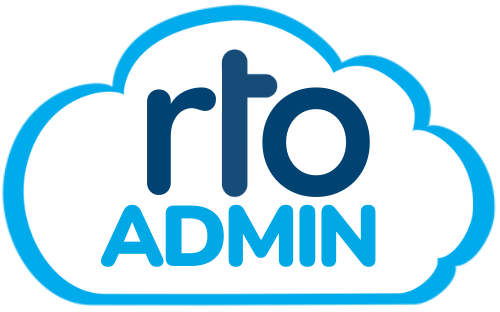Are you considering setting up your own Registered Training Organisation (RTO) but feeling overwhelmed by the registration process and all the required documentation? Becoming an RTO can indeed present a significant challenge, involving substantial effort, risk, and cost. However, with the right guidance and information, you can navigate this journey smoothly and set up your RTO successfully. This article is here to help you understand everything you need to know about registering an RTO, from necessary documentation to compliance requirements and financial considerations.
What is a Registered Training Organisation (RTO)?
Before delving into the registration process, it’s essential to understand what an RTO is. RTOs are training providers registered by the Australian Skills Quality Authority (ASQA) to deliver vocational education and training (VET) services. These organisations are essential in equipping students with the skills and knowledge needed for various industries.
The Role of an RTO
As an RTO, you provide accredited courses and certifications that are nationally recognized. This means your organisation must meet specific standards and requirements to ensure students receive high-quality education and training.
Initial Steps in Setting Up an RTO
The journey of setting up an RTO starts with solid preparation and understanding of what lies ahead. The process is intricate and involves meeting stringent compliance standards, financial planning, and strategic business planning.
Preparing a Business Strategy
Your first step on this journey should be designing a robust business strategy. This involves understanding your market, identifying the training needs you aim to meet, and aligning your goals with regulatory requirements. Consider factors such as potential students, industry needs, competition, and how your RTO will stand out.
Financial Viability and Planning
Financial planning is crucial and involves assessing whether your RTO can sustain itself financially during and after the registration process. This requires preparing a financial viability assessment that includes projected income and expenses, startup costs, and potential sources of funding. Ensuring you have the necessary financial resources is a significant part of ensuring your RTO’s longevity and success.
The Registration Documentation Process
The documentation process is the backbone of RTO registration. Thorough preparation and meticulous attention to detail can streamline your journey.
Key Documents Required
You’re required to submit several essential documents, demonstrating your readiness to operate as an RTO and your ability to meet required standards.
Business Plan
A comprehensive business plan outlines your RTO’s goals, strategies, and how you plan to achieve them. It should cover your marketing strategies, financial projections, and operational plans.
Training and Assessment Strategies (TAS)
Your TAS should detail how you intend to deliver and assess the training. This includes the course content, delivery methods, assessment processes, and resources required. It should align with the Standards for RTOs 2015 and demonstrate how you will meet each standard effectively.
Policies and Procedures
You’ll need a set of documented policies and procedures that adhere to regulatory requirements. These should cover areas such as student enrolment, grievances, assessment processes, and continuous improvement.
Lodgement Fee Payment
An integral part of your documentation submission is paying the lodgement fee. This fee is a necessary step to progress your application to the next stage.
Undergoing Audits by ASQA
Once your documentation is submitted, your application will undergo a series of audits. This is to ensure compliance with the set national standards.
Desktop Audit
During the desktop audit, ASQA reviews your submitted documents and evaluates whether they meet the registration requirements. This is a critical step that determines if your documentation sufficiently demonstrates compliance.
Validation Process
Following the desktop audit, your RTO must undergo a validation process. This helps ensure your training and assessment strategies are effective and meet industry standards. It’s a step towards proving that your delivery meets the expected educational outcomes.
Receiving Initial Registration
If your application is successful, you will receive an initial registration, typically valid for two years. It’s important to note that this registration comes with certain restrictions and conditions you must adhere to.
Restrictions and Compliance
Initially, your RTO may face limitations such as caps on student numbers or scope of courses offered. Compliance with ongoing audits and continuous improvement processes is vital for maintaining your registration status.
Important Considerations for Your RTO
Beyond the formal registration process, several key factors require attention to ensure your RTO’s success.
Developing Policies and Procedures
Your organization needs policies and procedures closely aligned with the Standards for RTOs 2015. They should cater to your unique context and operational needs while ensuring compliance at all times.
Implementing a Student Management System
A compliant student management system is vital not just for registering but for future growth. It should integrate various functionalities, like reporting, enrolment, and communication tools, enhancing your ability to manage student interactions efficiently.
Financial and Resource Considerations
Setting up an RTO involves significant expenses, which makes understanding these financial obligations crucial.
Cost Elements in Establishing an RTO
Various costs come into play when setting up your RTO. Being aware of these can help you budget effectively.
Off-the-Shelf Materials
Purchasing ready-made training materials can speed up the setup process but may require modification to suit your specific courses.
Student and Learning Management Systems
Investing in robust software systems assists with managing the educational journey, from enrolment to graduation. These systems are crucial for compliance and operational efficiency.
Training Materials and Legal Costs
Developing unique training materials can be costly but necessary for aligning with accreditation standards. Moreover, legal fees can add up when consulting with experts to ensure compliance with regulations.
Company Registration and Website Building
You’ll need to officially register your company and establish an online presence through a website—key components in iterating professionalism and reaching potential students.
Consultancy Fees
Engaging consultants can provide valuable insights and expertise, particularly if you’re new to the RTO space. While it adds to initial setup costs, having experienced guidance can be invaluable.
Crucial Planning and Preparation
Your ability to thoroughly plan and prepare extends beyond the initial setup. Think of this as a continuous process, particularly since regulations and industry demands evolve over time.
Understanding Regulations and Compliance
Stay informed about changes in regulations that affect RTOs. Continuous education in this area will aid in maintaining compliance and keeping your RTO operational and competitive.
Evaluating Financial Implications
Regularly revisiting your financial plans and projections ensures your RTO remains financially viable. Understanding the financial implications of decisions helps in managing risks and capitalizing on growth opportunities.
The Importance of Ongoing Improvement
Create a culture of continuous improvement within your RTO. Regularly evaluate your training delivery, processes, and student feedback to enhance your offerings and maintain high standards.
Conclusion
Registering an RTO in Australia is undeniably a challenging yet rewarding endeavor. By carefully understanding the registration process, requirements, and financial obligations involved, you can pave the way for a successful and impactful training organisation. Remember, thorough planning, developing strong documentation, and ensuring compliance with standards are key. As you embark on this path, keep your focus on delivering high-quality education and adapting to evolving industry demands. Good luck on your journey to making a difference in the vocational education sector!




